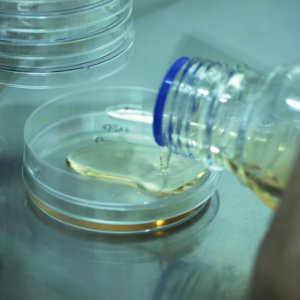blog
June 24, 2014 | Source: Rapid Micro Biosystems, Inc.
Real-World Use Case of Automated, Growth-Based RMM: Distinguishing Between Biologics and Bacterial Growth
POSTED BY Rapid Micro Biosystems | 4 minute read
June 24, 2014 | Source: Rapid Micro Biosystems, Inc.
POSTED BY Rapid Micro Biosystems | 4 minute read
 While lean processes in the pharmaceutical industry are most commonly practiced in production, quality control departments are beginning to implement their own lean initiatives to address lab inefficiencies. Some businesses have begun to complement their lean processes through rapid microbial methods (RMM). Among the most versatile of these methods is automated growth-based RMM, the automation of the time-tested compendial method most companies are already using. Automated, growth-based RMM requires no reagents or preparation procedures, and its similarity to existing techniques makes it compatible with a variety of microbiological tests and sample types.
While lean processes in the pharmaceutical industry are most commonly practiced in production, quality control departments are beginning to implement their own lean initiatives to address lab inefficiencies. Some businesses have begun to complement their lean processes through rapid microbial methods (RMM). Among the most versatile of these methods is automated growth-based RMM, the automation of the time-tested compendial method most companies are already using. Automated, growth-based RMM requires no reagents or preparation procedures, and its similarity to existing techniques makes it compatible with a variety of microbiological tests and sample types.
In the first installment of this series, we discussed the benefits of placing environmental monitoring testing closer to manufacturing. Now we'll talk about reducing production times and times to market through automated, non-destructive testing.
Often in the testing of biologics, there is a need to distinguish between desired cells and potentially harmful bacteria and fungi. This can sometimes make the use of a rapid method more difficult. To safely decrease overall production and shipping times, an RMM needs a method to selectively lyse their proprietary cells, leaving other organisms of interest intact and detectable.
The Growth DirectTM System meets all of these criteria and more, but the selective lysis procedure and non-destructive testing are usually most important for these types of manufacturers. Without selective lysis, it would be nearly impossible for them to accurately distinguish between benign and potentially harmful organisms, making it more difficult to conduct targeted interventions where necessary.
Furthermore, a positive result tends to require at least two additional days of labor as users re-culture and identify organisms of interest. With the Growth DirectTM System, users can quickly identify harmful organisms and trouble spots and intervene as necessary.
With this scenario, automated rapid technologies such as The Growth DirectTM System can streamline biologics sterility tests, allowing microbiologists to dedicate saved time to other critical tasks. They can also establish company-wide standards for RMM installation and validation to efficiently and safely perform future implementations at their other facilities worldwide. The RMM technology can be a valuable tool to help reduce times to market.
Get a better idea of how you can apply rapid methods in your lab and learn more about other companies' experiences with growth-based RMM.